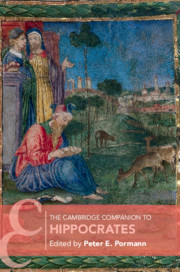Book contents
- The Cambridge Companion to Hippocrates
- Other Volumes In The Series Of Cambridge Companions
- The Cambridge Companion to Hippocrates
- Copyright page
- Contents
- Notes on Contributors
- Preface
- Notes on Citations
- 1 Introduction
- 2 The ‘Hippocratic Question’ and the Nature of the Hippocratic Corpus
- 3 Textual History
- 4 Body
- 5 Aetiology
- 6 Epistemologies
- 7 Ethics and Deontology
- 8 Nosology
- 9 Therapeutics
- 10 Surgery
- 11 Female Patients
- 12 Doctors and Patients
- 13 Galen’s Hippocrates
- 14 Late Antiquity
- 15 Arabo-Islamic Tradition
- 16 Western Medicine since the Renaissance
- Appendix Compiled by Melissa Markauskas
- References
- Index
- Other Volumes In The Series Of Cambridge Companions
- References
References
Published online by Cambridge University Press: 31 October 2018
- The Cambridge Companion to Hippocrates
- Other Volumes In The Series Of Cambridge Companions
- The Cambridge Companion to Hippocrates
- Copyright page
- Contents
- Notes on Contributors
- Preface
- Notes on Citations
- 1 Introduction
- 2 The ‘Hippocratic Question’ and the Nature of the Hippocratic Corpus
- 3 Textual History
- 4 Body
- 5 Aetiology
- 6 Epistemologies
- 7 Ethics and Deontology
- 8 Nosology
- 9 Therapeutics
- 10 Surgery
- 11 Female Patients
- 12 Doctors and Patients
- 13 Galen’s Hippocrates
- 14 Late Antiquity
- 15 Arabo-Islamic Tradition
- 16 Western Medicine since the Renaissance
- Appendix Compiled by Melissa Markauskas
- References
- Index
- Other Volumes In The Series Of Cambridge Companions
- References
- Type
- Chapter
- Information
- The Cambridge Companion to Hippocrates , pp. 390 - 436Publisher: Cambridge University PressPrint publication year: 2018



